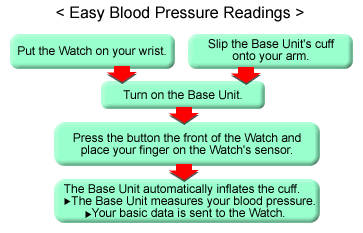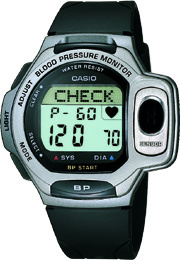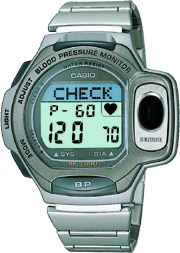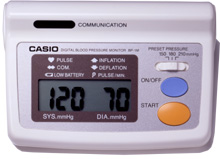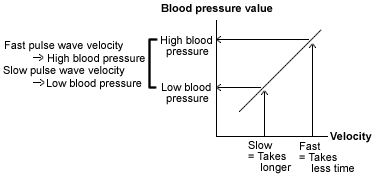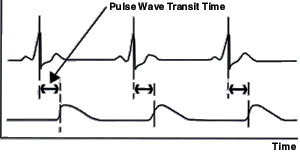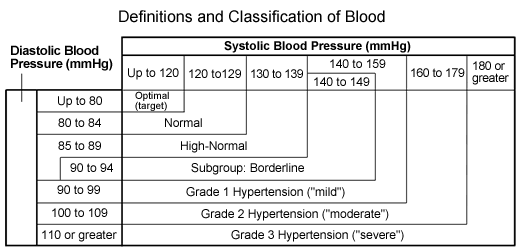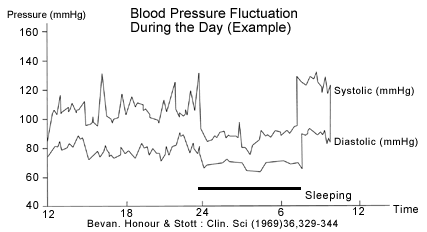
It is often said even healthy individuals should check their blood pressure several times a day in order to keep tabs on their physical condition. CASIO's new WRIST LINK BLOOD PRESSURE MONITOR now makes healthy living easier than ever before by making it possible to check your blood pressure just about any time and any time throughout the day. An upper arm type Base Unit lets you take highly accurate measurements at home and provides "basic data" that can be transferred send to the Watch monitor. Basic data stored in Watch monitor memory is used for taking quick and easy blood pressure reading while on the go. The Base Unit and Watch provide the perfect combination for monitoring your blood pressure and overall health throughout the day.
|

